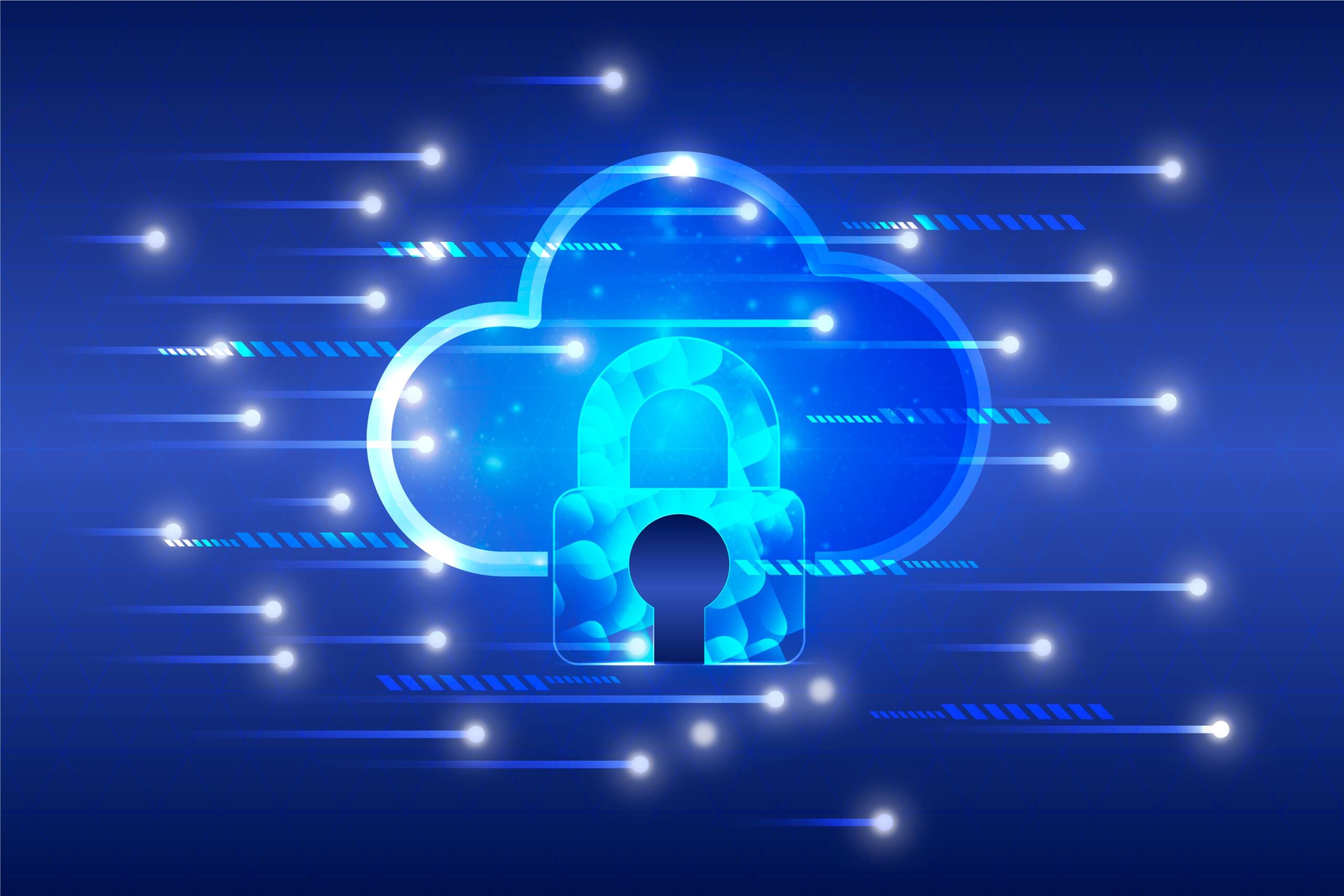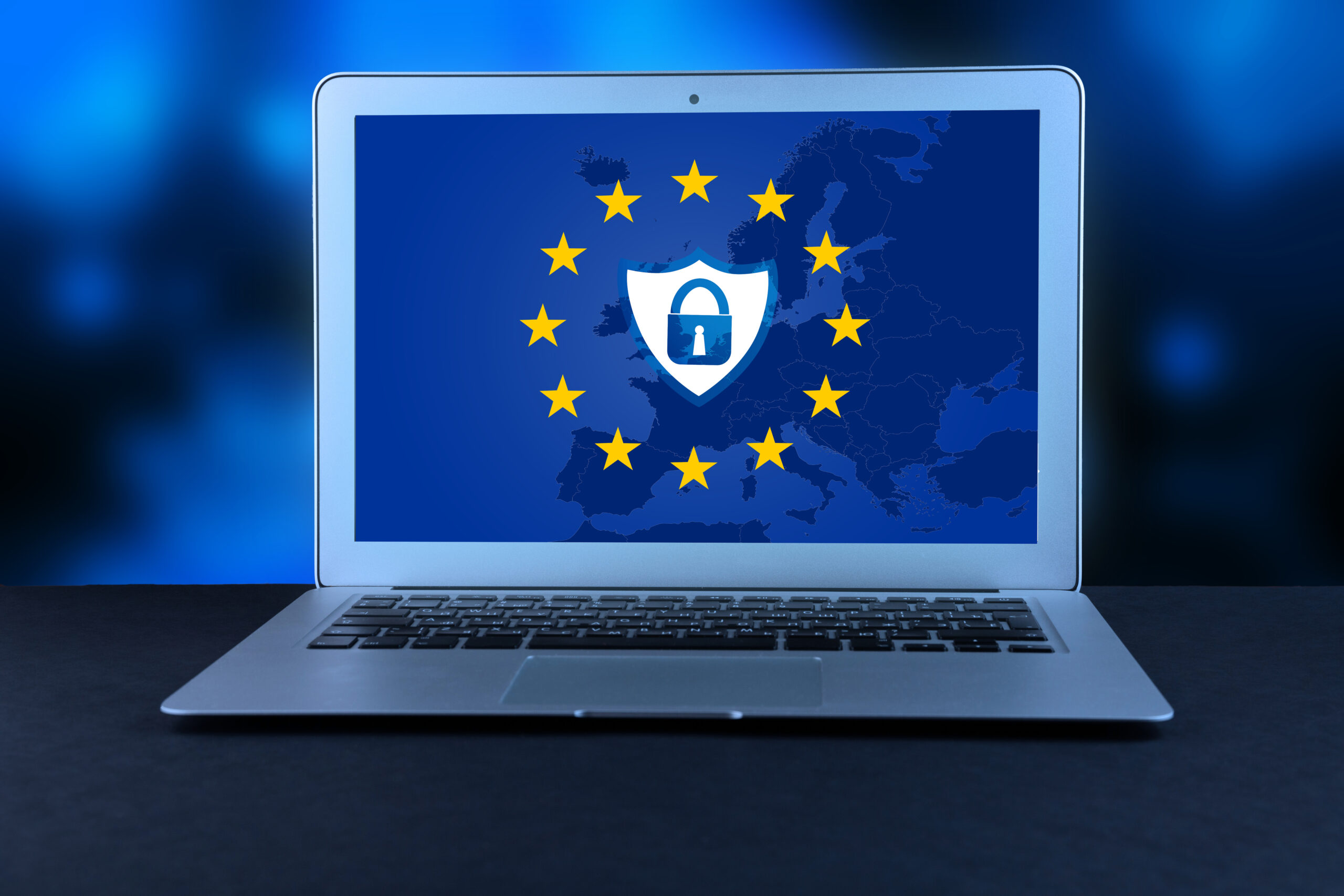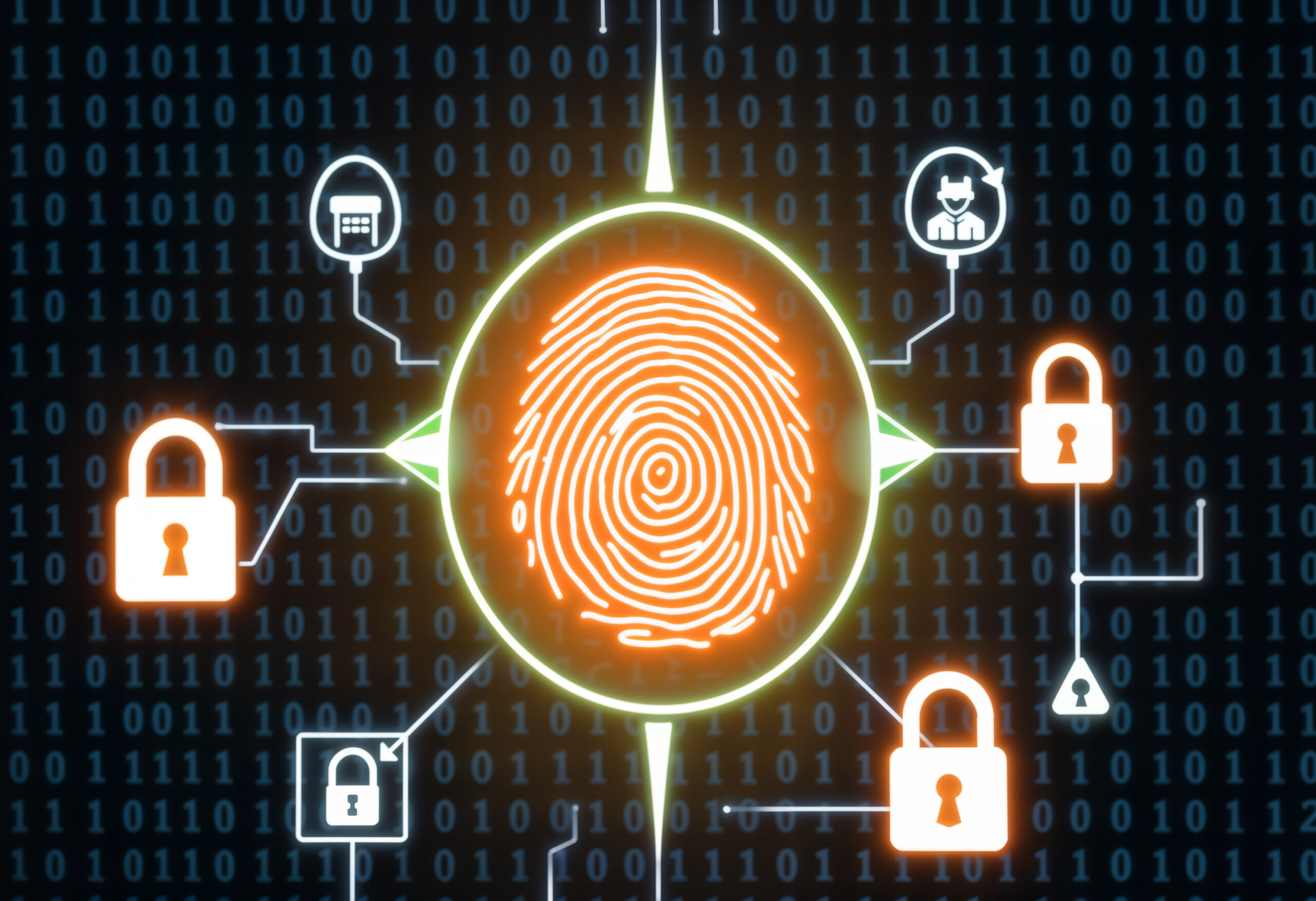The importance of cloud security in protecting your data
Personal and professional data has become one of the most valuable assets. We are not just talking about documents, photos, or emails, but sensitive information, contracts, bank details, business plans, and strategies. In most cases, all of this is stored and managed in the cloud.
However, this convenience has its counterpart: cloud security risks. They are not a simple possibility but a reality affecting companies and individuals. Protecting our data against digital threats is an urgent need, not a technological luxury.
Before getting into the matter, you should know Kartos, our solution for companies that want to maintain control over their cybersecurity. Kartos is a Continuous Threat Exposure Management (CTEM) solution that constantly monitors an organization's digital environment and detects vulnerabilities before they become a real problem.
What exactly is cloud security?
When we talk about cloud security, we refer to the set of technologies, policies, controls, and procedures that protect systems, data, and infrastructure hosted on cloud platforms.
That is, it is not just about using strong passwords but about ensuring that the cloud service provider, configuration, and users act safely and consciously.
Here, we have everything from encryption systems to access control practices, threat detection, and incident recovery plans.
How does cloud security work?
Cloud security operates at several levels:
- Infrastructure layer: where the hardware and physical servers on which the cloud resides are protected.
- Network layer: responsible for monitoring data traffic and preventing unauthorized access.
- Application layer: This guarantees that the applications do not have flaws that allow attacks.
- Data layer: where encryption, authentication, and backup tools are implemented.
In addition, there are specialized tools that go beyond static protection, as is the case with our solutions, which work under an active cyber surveillance model. This means that they not only protect but also constantly monitor and evaluate the level of exposure to digital risks.
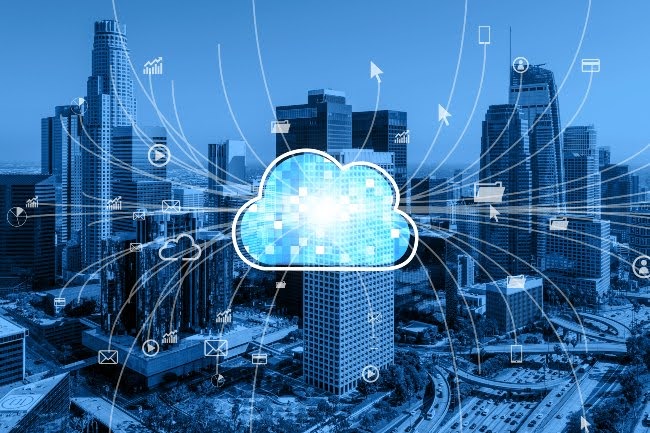
Why should we take cloud security risks seriously?
Cyber attacks are a reality. According to an IBM study published in 2023, the average cost of a cloud security breach is $4.35 million.. And it's not just large companies that are frequent targets: SMEs and individual users are also frequent targets precisely because they tend to have laxer security measures.
Some of the top cloud security risks include:
1. Unauthorized access
Poor permission management or weak passwords can give cybercriminals access. This is especially serious if the data involved is personal, financial, or confidential.
2. Data loss or leak
Cloud systems can be misconfigured, exposing files. Sometimes, user data has been published inadvertently due to human error or technical oversights.
3. Ransomware attacks
In these attacks, criminals encrypt files stored in the cloud and demand a ransom to release them. Staining that data may be impossible without a good backup and discovery strategy.
4. Misuse of resources
Sometimes, attackers do not seek to steal data but instead use the infrastructure to mine cryptocurrencies or launch other attacks from our account, thus compromising the reputation and resources of the organization.
How to protect yourself: keys to a good cloud security strategy
It is not enough to have good faith or trust that “it won't happen to me.” Prevention is the only effective barrier against threats. Here are some basic recommendations:
Choose trusted suppliers
Not all cloud platforms offer the same level of security. Ensure the supplier complies with regulations such as ISO 27001 o GDPRand has clear incident protocols. A third-party risk assessment, like the one allowed by Kartos, is key to protecting your value chain and preventing someone else's weakness from compromising you.
Monitor your exposure
This is where a solution like Kartos is beneficial. Through active external attack surface (EASM) management,Kartos detects exposed assets, vulnerable configurations, or spoofed domains. This allows anticipation phishing or brand impersonation campaigns, which are common in targeted attacks.
Use strong passwords and multi-factor authentication
It seems obvious, but even today, many credential leaks start with a weak or reused password. If you can, enable two-step authentication on all services. Kartos can detect when your credentials are exposed on dark web forums or markets.
Make regular backups
If your information disappears or is hijacked by ransomware, the best way to protect yourself is to have an up-to-date, secure copy. Although Kartos does not replace backup, its constant monitoring helps detect anomalous activity before attacks, which can give you time to act.
Educate your team
Many times, the weakest link in the security chain is the human. One click on a fake message on social networks or a cloned website can be enough to land you in a phishing, fraud, or identity theft campaign.
Enthec's role in your digital security
In this scenario, Enthec is not just a technology solutions provider. It is a strategic ally in cyber surveillance and active protection. Its CTEM approach allows continuous monitoring of the status of your cybersecurity, offering quick and effective responses.
Through Kartos, designed for companies, you can evaluate each exposed vulnerable point of your digital infrastructure. This tool helps you make informed decisions and act before a problem exists.
Cloud security is your responsibility
It is easy to think of the cloud as an intangible and harmless space. But the truth is that, like any place where value is stored, it has dangers. Cloud security is not optional but an investment in peace of mind, reputation, and continuity.
Solutions like those offered by Enthec, with its proactive approach tailored to businesses and individual users, put you several steps ahead of cybercriminals.
Don't wait for something to fail to act. Start protecting your data with Enthec today.
NIS 2: How does it affect companies, and what measures must be taken to comply with the regulations?
In an environment where cybersecurity has become critical for business survival, the entry into force of the NIS 2 Directive marks a before and after for hundreds of organizations in Europe.
This is not a recommendation or a simple guide to best practices: NIS 2 is mandatory and requires companies to protect their systems, data, and services against increasingly complex threats.
But what exactly does this directive imply? How does it affect companies in Spain, and which sectors must comply with it? Above all, how can an organization adapt without being overwhelmed by technical complexity?
This article explains everything clearly and shows how tools like Kartos by Enthec can help you take that step safely and effectively.
What is the NIS 2 Directive?
The NIS 2 Directive (Network and Information Security) is the evolution of the first NIS directive, approved in 2016. It was created to improve the resilience of essential services to cyberattacks. resilience of essential services to cyberattacks.
However, the first version was reduced due to the evolving threat landscape. That's why the European Union published the new NIS 2 Directive in January 2023, significantly expanding its scope and requirements.
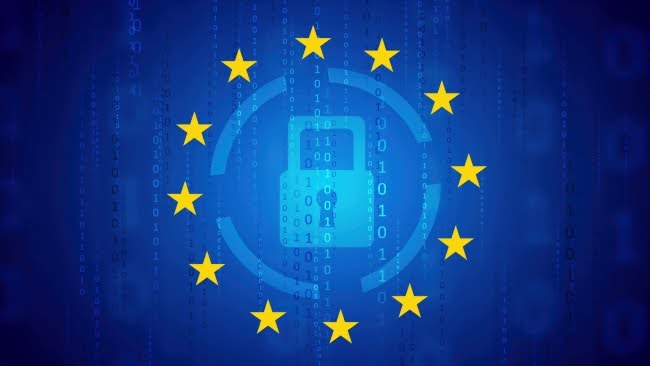
What changes with NIS 2?
- The number of affected sectors is expanded.
- Security and notification obligations are tightened.
- Penalties for non-compliance are increased.
- Cybersecurity governance and oversight in member countries are strengthened.
NIS 2 regulates and demands active company responsibility, incorporating continuous surveillance, prevention, and threat response measures.
Which companies are affected by NIS 2?
One of the key points of this regulation is its expansion of the scope of application.. It is no longer limited to large critical infrastructures such as electricity, transport, or health. No,w it also includes medium and large companies in sectors such as:
- Information and communication technologies (ICT)
- Chemical and food manufacturing
- Water, waste, and digital services management
- Cloud service providers, data centers, DNS, and domain registries
According to INCIBE estimates, more than 12,000 entities in Spain could be affected by the NIS 2 regulation.. Many of them, especially tech SMEs, have not yet started to prepare.
What does NIS 2 require of companies?
Complying with NIS 2 is not just a matter of software or firewalls;it involves a comprehensive approach that affects the organization at multiple levels.
Among the main requirements, the following stand out:
Technical and organisational measures
Enterprises must implement appropriate security controls, from network segmentation and vulnerability management to access policies or data encryption.
Ongoing risk assessments
Regulations require regular analyses and assessments of risks associated with the security of networks and systems.
Obligation to report incidents
In the event of a significant incident, the company must inform the competent authorities within 24 hours, which requires having effective detection and response systems.
Governance and accountability
Senior management must be actively involved in the cybersecurity strategy. Responsibility cannot be delegated solely to technical teams.
Sanctioning regime
NIS 2 introduces penalties that can reach up to €10 million or 2% of global annual turnover, making compliance a strategic necessity.
You may be interested in our post→ Regulatory compliance in cybersecurity: Keys to being current.
How do you prepare to comply with NIS 2?
Given the scope and requirement of this directive, many companies are looking for solutions that allow them to adapt without slowing down their activity.. This is where Continuous Threat Exposure Management (CTEM) comes in.
This approach allows companies to monitor their systems, detect weaknesses in real time, and reduce their exposure to attacks, which is key to aligning with NIS 2.
Kartos: your ally for continuous threat management
Kartos, Enthec's enterprise-oriented cyber-surveillance solution, has been designed precisely with the CTEM approach in mind. Its objective is not only to monitor but to anticipate risks.
With Kartos, companies can:
- Detect publicly exposed vulnerabilities in real time.
- Identify risks associated with domains, IPs, or digital services.
- Receive automatic alerts and detailed analysis about exposure.
- To comply in an agile and continuous way with the requirements of NIS 2.
Unlike one-off audits, Kartos offers a dynamic and up-to-date view of the organization's cybersecurity, allowing you to react before it's too late.
What about individual professionals?
Although NIS 2 focuses on enterprises, digital security is also critical for individual professionals. For this reason, Enthec has also developed Qondar, a tool for individual users who want to protect their digital identity and reputation.
From data breaches to phishing, Qondar lets anyone know their exposure and take action quickly.
Is your company ready?
If you have doubts or need help assessing your level of compliance, Enthec can help. Our team will advise you on adopting a cybersecurity strategy that is aligned with the regulations and adapted to your reality.
For thousands of companies in Spain and throughout Europe, the NIS 2 directive is not an option but an obligation.. More than just a legal requirement, it's an opportunity to improve security, gain trust, and protect business continuity.
Adapting requires vision, commitment, and the right tools. Along the way, solutions like Kartos become a key competitive advantage.
Common Types of Cyberattacks - Part II.
Computer security is a fundamental pillar for companies and individuals. Technological advances have facilitated the digitization of many processes but have also opened the door to new risks.
Knowing the most common types of cyberattacks is key to preventing them and minimizing their consequences. This is not only about protecting personal data but also about preventing companies and institutions from suffering attacks that could affect their operations and reputation.
Advanced surveillance and security management tools are essential to dealing with these threats. In this sense, Kartos offers a solution specialized in Continuous Threat Exposure Management (CTEM).
We monitor and analyze vulnerabilities, detecting information leaks and security breaches before cybercriminals can exploit them.
What is a cyberattack, and how many types are there?
We call a cyberattack any type of offensive maneuver used by individuals or entire organizations that targets computer systems, infrastructures, computer networks, and/or personal computer devices. These attacks attempt to hack into a system through one or more digital acts, usually originating from an anonymous source, to steal, alter, or destroy a specific target.
There are different types of cyberattacks, which can be classified according to their method of attack or the purpose they pursue. Below, we explain the most frequent and dangerous ones.
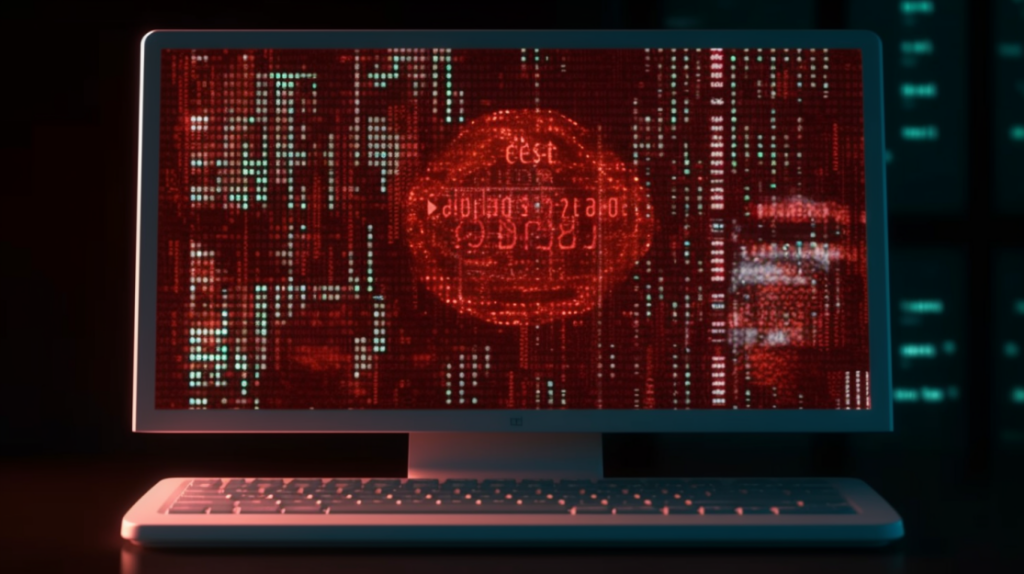
Main types of cyberattacks
Ransomware
This attack has become one of the most devastating threats in recent years. Ransomware encrypts files on a device or an entire network and demands payment to restore access.
Victims often receive threatening messages stating that if they do not pay the ransom within a specific time, they will lose their data forever. However, paying does not guarantee the recovery of the information and, in addition, finances the attackers to continue operating.
Phishing
Malware
Malware is any type of software that intentionally performs malicious actions on a system without the user's knowledge. Viruses, worms, and Trojan horses are different types of malware.
Within malware, we find several categories:
- Virus. A computer virus is a small script of code that, when executed, replicates itself by modifying other computer programs, which are called hosts, and inserting its own code to alter a computer's operation. Of course, since this is a type of malware, all of this is done without the user's permission or knowledge.
- Worms. A computer worm is a standalone malware program that replicates itself to spread to other computers. This differs from a virus because the virus needs a host program, but the worm does not. A worm often uses a computer network to spread, relying on security flaws in the target computer to gain access to it. Once there, it will try to scan and infect other computers.
- Trojan Horse. A Trojan horse virus is a type of malware that is downloaded onto a computer disguised as a legitimate program. It is usually hidden as an attachment in an email or a free download file and then transferred to the user's device. Once downloaded, the malicious code will execute the task the attacker designed it to do, such as spying on users' online activity or stealing sensitive data.
Malware can compromise everything from individual computers to large business networks, causing financial losses and operational problems.

Phishing
Phishing is a method of social engineering in which attackers impersonate legitimate entities (banks, businesses, or online services) to trick victims into obtaining sensitive information.
Phishing emails often include links to fake web pages that mimic the real thing. When the victim enters their data, cybercriminals steal it and use it to access bank accounts, emails, or corporate networks.
Phishing attacks have evolved, and there are now more sophisticated variants, such as spear phishing, which is aimed at specific targets within a company, and whaling, which is focused on managers and senior managers.
If you want to learn more about this cyberattack, access our post→ Phishing: what it is and how many types there are.
Denial-of-service (DDoS) attacks
Distributed denial-of-service (DDoS) attacks seek to overload a website or online service's servers by sending a massive volume of fake traffic. As a result, the servers stop working correctly, preventing access to legitimate users.
These attacks can be used to extort money from companies, causing economic losses and damaging the reputation of the affected company.
Spyware
Spyware is spyware installed on a device without the user's knowledge. It aims to collect private information, such as browsing habits, passwords, or banking details.
Some spyware records everything the user types on their computer, making it easier to steal credentials. Others take screenshots or activate cameras and microphones without authorization.
Botnet
Botnets are networks of infected devices that cybercriminals use to carry out massive attacks. These devices, called bots, can be personal computers, servers, or IoT (Internet of Things) devices, such as security cameras or smart appliances.
Botnets allow attackers to automate spamming, distribute malware, conduct DDoS attacks, or mine cryptocurrencies without the knowledge of the owners of the infected devices.
Man-in-the-Middle (MitM)
In this attack, the cybercriminal intercepts communication between two parties to spy, manipulate, or steal information.
These attacks often occur on insecure public Wi-Fi networks, where attackers can capture sensitive data, such as bank account access credentials or emails.
Companies should have an advanced cyber surveillance solution that allows detecting and mitigating threats before they materialize.
Protect your business with Kartos
Kartos, developed by Enthec, is a Continuous Threat Exposure Management (CTEM) platform designed to monitor and protect organizations.
Kartos scours all three layers of the web for vulnerabilities and breaches of corporate information, allowing companies to take preventative measures before an attack occurs. Its advanced technology provides a complete view of an organization's level of exposure, reducing the risk of cyberattacks.
To learn more about how Kartos can help protect your business, contact us and learn how to stay ahead of digital threats.
Factors that facilitate BEC attacks on senior managers and solutions to mitigate them
Businesses are increasingly exposed to sophisticated cyberattacks that seek to exploit their vulnerabilities. BEC (Business Email Compromise) attacks have become one of the biggest threats to organizations of all sizes.
The main format of this type of fraud is social engineering: cybercriminals impersonate a senior manager to deceive employees and suppliers, achieving fraudulent money transfers or the theft of critical information.
The problem is that these attacks depend not on technical vulnerabilities but human errors and insecure processes.The risk is multiplied if senior executives are targeted: their access to privileged information and decision-making capacity make them perfect targets.
How can companies protect themselves? The answer lies in continuous management of exposure to threats. This is where solutions such as Kartos by Enthec come into play: a cyber-surveillance tool that allows companies to identify risks before they become serious incidents. But before discussing solutions, let's look at why BEC-type attacks are so successful among senior managers.
Why are senior managers the preferred target in BEC attacks?
Cybercriminals seek to maximize their profitability with as little effort as possible. Senior managers offer the perfect combination of authority, access to sensitive data, and a high volume of financial communications.
Here are some key reasons why BEC-type attacks are so successful in this profile:
1. High level of trust in your communications
Managers are used to having great responsibility and often must make quick decisions.For this reason, they may not question every email they receive, especially if it comes from a regular contact. Attackers use this trust to sneak into the daily routine without raising suspicion.
2. Frequent use of personal devices
Many executives use their mobile phones or tablets to access corporate email without the same security measures as on a company computer. This facilitates unauthorized access and spoofing.
3. High workload and urgency in decisions
Senior managers are often overloaded with tasks and under pressure to respond quickly. Cybercriminals use tactics such as a "sense of urgency" to get users to act without verifying the authenticity of an email or payment request.
4. Public profiles on the internet and social networks
Information about a CEO or CFO is usually available online: interviews, LinkedIn posts, events in which they participate, etc. This helps attackers build extremely credible fake emails, using language and tone similar to the manager's.
5. Lack of specific cybersecurity training
Unlike other employees, executives rarely receive ongoing training in digital security.Their position in the company often results in them being excluded from these processes, making them a weak link in the security chain.
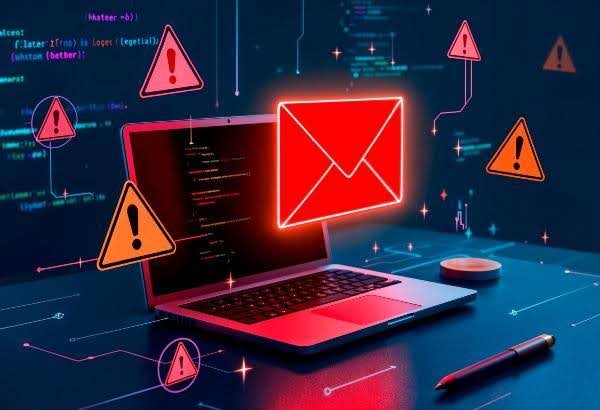
How to Mitigate BEC Attacks on Senior Managers
Prevention is the key to avoiding falling for a BEC attack. Companies must combine awareness, technology, and security protocols to reduce exposure to these threats.
Here are some fundamental measures:
1. Implement a Continuous Threat Exposure Management (CTEM) solution
CTEM tools allow real-time analysis of threats targeting the company and its managers. For example, at Kartos, we constantly monitor the company's level of exposure, detecting impersonation attempts or data leaks that could facilitate a BEC attack.
2. Strict verification of sensitive transactions
Businesses must establish two-factor authentication to authorize payments or changes to bank accounts. An email is not enough; It must be confirmed by phone or through a secure system.
3. Protecting the digital identity of senior managers
It is crucial to minimize public information about them on the internet and social networks and to locate sensitive personal information that may be exposed. In addition, they must use corporate email addresses with authentication protocols such as DMARC, SPF, and DKIM to prevent spoofing.
4. Continuous training and attack simulations
Managers should participate in phishing simulations and receive specific cybersecurity training. This will help them identify fraudulent emails and react appropriately to attack attempts.
You may be interested in→ Phishing: what it is and how many types there are.
5. Using Artificial Intelligence to Detect Anomalies
Advanced security systems can identify suspicious communication patterns and block phishing emails before they reach the user's inbox. They also identify online identity theft campaigns, as Kartos AI does, to monitor them until they are deactivated.
Protect your company with Kartos
BEC attacks continue to grow in number and sophistication, but the solution is not only strengthening technical security but also proactively managing threat exposure.
With Kartos, companies can monitor their presence on the network in real time and detect warning signs before attackers manage to impersonate a senior manager. This cyber surveillance and continuous threat management platform allows fraud to be prevented, sensitive data to be protected, and the risks arising from digital exposure to be minimised.
Want to learn more about protecting your business from BEC attacks? Find out how Kartos can help.
How to erase or reduce your digital footprint and minimize the risk of cyberattacks
Our online presence is broader than we imagine. Every search we make, every post we share, and every website we visit contribute to our digital footprint.
This footprint not only affects our reputation but can also expose us to various risks of cyberattacks. Therefore, it is essential to understand how to erase or reduce our digital footprint to protect ourselves on the Internet using tools such as Qondar, which allows you to monitor your online presence, identify data exposures, and much more.
What is digital fingerprinting, and how does it work on the Internet?
The digital footprint refers to the trace we leave when interacting in the digital environment. This trail can be active, such as social media posts or blog comments, or passive, such as information collected by websites without our awareness.
Whenever we browse, shop online, or use an app, we generate data that makes up our digital footprint.
This data is collected and stored by various entities, from marketing companies to cybercriminals, who can use it for purposes ranging from personalized advertising to malicious activities.
In addition, with the growth of artificial intelligence and big data, personal information has become a valuable resource that can be exploited without our knowledge.
Therefore, it is essential to understand how the digital footprint works on the internet to control it and minimize its impact on our privacy and security.
Impact of digital footprint on our reputation
Our digital footprint directly impacts how we are perceived in the online world. For example, an inappropriate photo or an unfortunate comment can affect job opportunities or personal relationships.
In addition, exposed personal information can be used to impersonate us, which entails legal and financial consequences.
According to cybersecurity experts, "everything exposed on the Internet is a danger, " highlighting the importance of properly managing our online presence.
Data breaches, which are reported occasionally, can expose sensitive information such as credit card numbers, personal addresses, or passwords, leaving us vulnerable to fraud and identity theft.
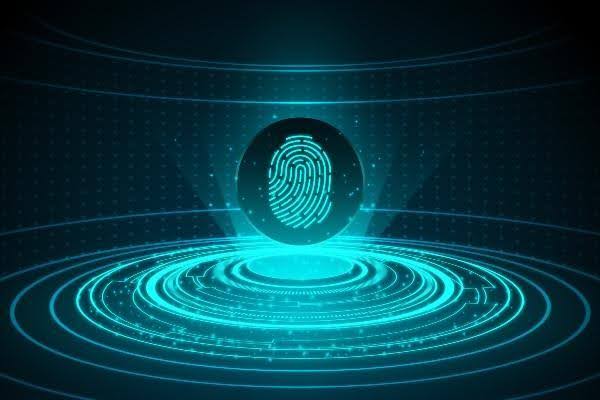
Strategies to reduce and eliminate your digital footprint
Here are some effective strategies to erase or reduce your digital footprint and minimize the associated risks:
1. Audit your online presence
Search for your name on search engines and see what information appears about you. This will allow you to identify sensitive or inappropriate data you want to delete. Review the images associated with your name, as they may reveal more information than you realize.
2. Set up the privacy of your accounts
Adjust privacy and security settings on social media and other platforms to control who can see your information and posts. Many platforms offer advanced privacy options that allow you to restrict access to your content to only people you trust.
3. Delete accounts you don't use
Close old accounts or those that you no longer use. If they are not adequately protected, these can be gateways for cybercriminals. Review the services you signed up for with your email and unsubscribe from those that are no longer relevant to you.
4. Request deletion of information
Contact administrators to request its removal if you find personal information on third-party websites. The LOPD allows you to demand that personal data you consider unnecessary or harmful be deleted.
5. Use privacy management tools
Some tools help you manage and minimize your digital footprint, alerting you to possible data exposures, as with Qondar. You can also use browsers with excellent privacy protection or search engines that don't track your activity.
It may interest you→ Importance of personal privacy in the digital age.
6. Be selective with the information you share
Before you post or share anything online, think about the potential consequences and who might have access to that information.
7. Keep your devices safe
Use strong passwords, regularly update your systems, and employ security software to protect your devices from potential threats. Avoid connecting to unprotected public Wi-Fi networks, as they can be used to intercept your information.
8. Regularly review your online reputation
Since digital footprint and reputation are closely linked, it's critical to regularly monitor what's being said about you online and take corrective action if necessary. You can turn on alerts in search engines to get notified when new information about you is published.
How to minimize the risks of cyberattacks
In addition to managing your digital footprint, it's crucial to take steps to protect yourself from potential cyberattacks:
1. Education and awareness
Educate yourself and stay up-to-date on current cyber threats and cybersecurity trends. Participate in courses or workshops on digital security to learn best practices.
2. Two-factor authentication
Enable two-factor authentication on your accounts to add an extra layer of security.
3. Watch out for links and attachments
Don't click on suspicious links or download files from unknown sources, as they could contain malware. Learn how to identify phishing emails and avoid providing personal data on unverified sites.
4. Make backups
Keep up-to-date backups of your important data to recover it in case of loss or attack.
5. Use secure networks
Avoid connecting to unprotected public Wi-Fi networks, as attackers can use them to intercept information. Use a VPN to encrypt your connection and protect your data whenever possible.
The Importance of Specialized Tools: Qondar by Enthec
Using specialized solutions to manage your digital footprint and protect against threats effectively is advisable. Qondar, developed by Enthec, is a Continuous Threat Exposure Management (CTEM) tool designed for individuals.
Qondar allows you to monitor your online presence, identify potential data exposures, and receive alerts on specific threats. This solution enables you to proactively protect your personal information and minimize the risks associated with your digital footprint.
Our digital footprint is an extension of ourselves in the virtual world. Properly managing it is essential to protecting our reputation and security. Adopting the strategies above and relying on specialized tools allows us to navigate the digital environment with greater confidence and peace of mind.
Remember, on the Internet, prevention and education are your best allies against cyber threats.
Whaling: the attack that targets senior executives and keys to avoid it
Although we don't always consider it, cybercriminals often look for the most influential people within a company: senior executives. Why? Because they have access to critical information, handle large amounts of money, and, in many cases, are not as prepared in terms of digital security as they should be.
This is where whaling comes into play,a type of attack aimed at a company's senior executives, who can approve millionaire transfers or know sensitive data without too many obstacles. And, although it may not seem like it, these attacks are more common than we think.
To combat this threat, solutions such as Qondar by Enthec help detect and prevent impersonation attempts and fraud targeting senior executives, strengthening the company's security against attacks such as whaling.
What is whaling and how does it work?
The term whaling comes from the word whale. This attack targets influential company personalities, such as managers, CEOs, CFOs, and others with access to strategic information.
It consists of an advanced form of phishing where attackers impersonate someone and trust to trick the victim into performing a harmful action, such as approving a transfer or sharing login credentials.
Criminals often employ several strategies:
- Spoofed emails.They develop spoofing techniques to make an email appear from the CEO, a trusted partner, or even an official body.
- Attacks man in the middle.They intercept communications between managers or employees to modify messages and obtain valuable information.
- Social engineering.They collect information from the victim on social networks or leaked databases to make their attacks more credible.
Unlike common phishing, which sends mass emails hoping that someone will fall for it, whaling is a personalized and well-crafted attack.
A real case of whaling
Imagine you're the CFO of a company. You receive an email from the CEO asking you to urgently approve a transfer of €250,000 to an account in another country to close an important deal. The message is well written, with the signature and tone that the CEO usually uses. He even has an answer above that seems authentic.
You will have fallen into the trap if you have no doubts and make the transfer without checking it with a call or a second channel. Days later, you will discover that the CEO never sent that message and that the money has been lost in a network of accounts that are impossible to trace.
This is not science fiction: companies of all sizes have lost millions to these attacks.

The relationship between whaling and the man-in-the-middle attack
One of the most sophisticated methods cybercriminals use in whaling is the Man in the Middle (MITM) attack.
In this attack, hackers communicate between two parties (e.g., between a manager and an employee) and manipulate messages without victims noticing.
How does a man-in-the-middle attack work in cybersecurity?
The attacker can:
- Intercept emails and modify content before they reach the recipient.
- Spying on network connections on public or misconfigured Wi-Fi networks.
- Spoofing websites to get the victim to enter their credentials on a page that looks legitimate.
For example, an executive may send an email with payment instructions, but if there is a man-in-the-middle attack, the hacker can change the target bank account without anyone noticing.
In this case, whaling and the man-in-the-middle attack combine to make the scam even more difficult to detect.
Keys to avoid a whaling attack
Fortunately, there are ways to protect yourself against these attacks.Here are some fundamental keys to avoid falling into fraud of this type:
1. Two-step verification always on
If an email or message requests a transfer of money or sensitive information, verify it through another channel.A simple call or message in another way can prevent financial disaster.
2. Avoid overexposure on social networks
The more personal information available about a manager, the easier for an attacker to forge a credible message. It is advisable to limit public information on LinkedIn and other platforms.
3. Implement security filters in emails
Whaling attacks usually come by email, so it is essential to have:
- Advanced email filters that detect phishing.
- Email authentication (DMARC, SPF, and DKIM) to prevent corporate email addresses from being forged.
4. Employ strict procedures for bank transfers
Transfers should not be approved just by mail or message. Implementing double authorizations and strict protocols can prevent millions in losses.
5. Keep systems and devices up to date
Attacks exploit vulnerabilities in outdated software. Always keeping your computers protected with security updates is critical.
Whaling is a dangerous attack that can affect any company, from small startups to large corporations. Most worryingly, it doesn't require sophisticated malware: just social engineering, spoofing, and a good bit of deception.
If it is also combined with a man-in-the-middle attack, the risks increase since cybercriminals can modify messages without the victim noticing.
The best cybersecurity defense against whaling attacks is prevention: establishing verification protocols and having advanced cybersecurity solutions in place. Tools such as Qondar make it possible to identify and de-identify exposed personal information, as well as fake social profiles, to prevent targeted attacks and protect senior executives from fraud and impersonation attempts. Investing in security is not an option, but a necessity to avoid being the next victim.
The impact of man-in-the-middle attacks on companies
Security in communications is key for any company. Today's cybercriminals are always looking for new ways to intercept data and exploit vulnerabilities. One of the most dangerous methods is the Man in the Middle (MitM) attack, a technique that can compromise sensitive information without the victim realizing it.
But what exactly is a Man in the Middle attack, and how can it affect a company? In this article, we explain its impact, real examples and how to protect yourself against this type of cyber threat.
Learn how advanced solutions like Kartos can help you protect your company's communications and prevent these attacks.
What is a Man in the Middle attack?
A Man in the Middle attack occurs when a cybercriminal is placed between two parties who believe they are communicating directly with each other.The attacker intercepts the information, modifies it if desired, and forwards it without any party suspecting anything.
Imagine you're in a coffee shop, and you connect to public Wi-Fi to check your work email. Unknowingly, a hacker is on the same network and has created a fake access point with the same name as the premises' Wi-Fi. When you enter your login credentials, the attacker captures them without you noticing.
These attacks can be applied in various scenarios, from unsecured Wi-Fi networks to email interceptions and more sophisticated attacks on corporate networks.
The impact of a Man in the Middle attack on a company
For businesses, a Man in the Middle scam can have devastating consequences.Confidential information is put at risk, and relationships with customers and suppliers can also be affected. Let's look at some of the most significant impacts:
1. Credential theft and unauthorized access
Man in the Middle attacks can capture sensitive data such as usernames, passwords, and corporate service access credentials. A cybercriminal with access to this data could perform financial fraud, modify key information, or even sabotage internal processes.
2. Identity theft and financial fraud
Sometimes, the attacker intercepts the information and modifies it in real-time.
For example, a company may transfer money to a supplier. If a hacker has compromised the communication, he can change the account number in the message before it reaches the recipient.Thus, the money ends up in the attacker's account instead of the provider's.
This attack is becoming more common in business transactions and electronic payments, and many businesses have lost large sums of money.
3. Leaking sensitive data
Man in the Middle attacks can also spy on a company's communications.If employees send unencrypted emails or use unprotected public Wi-Fi networks, an attacker can gather insights without anyone noticing.
This poses a significant risk for companies that handle sensitive data, such as law firms, technology companies, and financial institutions. Data breaches can damage a company's reputation and lead to legal penalties for non-compliance with data protection regulations.
4. Loss of trust from customers and partners
Businesses depend on the trust of their customers and business partners. If a company suffers a Man in the Middle attack and customer data is compromised, the corporate image will be affected.
People are becoming increasingly aware of the importance of digital security, and such an incident can cause customers and partners to look for safer alternatives.
Example of a Man in the Middle attack in the real world
To better understand the scope of these attacks, let's look at a real-life Man in the Middle attack:
In 2015, security researchers discovered a large-scale MitM attack on public Wi-Fi networks at European airports. The cybercriminals had installed fake hotspots with names similar to those of legitimate networks.
Attackers could intercept login credentials, banking information, and personal data when passengers connected.Many business executives were victims without even realizing it.
This attack demonstrated how easy it is to exploit insecure connections and how a cybersecurity breach can compromise critical business data.

How to protect your business from a Man in the Middle attack
Fortunately, there are several strategies to minimize the risk of a Man in the Middle attack. Here are some key measures:
1. Use of encryption in all communications
Data encryption is one of the best defenses against these attacks. HTTPS, VPNs, and encrypted emails should be used whenever sensitive information is exchanged.
2. Avoid public wifi networks
Open Wi-Fi networks pose a significant risk. If employees need to connect in a public place, they should use a VPN to protect their data traffic.
3. Implementing Multi-Factor Authentication (MFA)
If an attacker manages to intercept credentials, multi-factor authentication can prevent them from accessing the account.This method adds an extra layer of security, such as a code sent to the user's mobile.
4. Network traffic monitoring
Businesses should use security tools to detect suspicious activity on their network. Traffic analysis can identify unusual patterns that indicate the presence of an attacker.
5. Staff education and awareness
Many attacks take advantage of employees' lack of knowledge. Training staff in good digital security practices, such as recognizing fake websites and avoiding using unsecured networks, is essential.
6. Digital certificates and electronic signatures
Businesses can use digital certificates to authenticate their communications. This makes it difficult for attackers to impersonate identities or modify messages.
The Man in the Middle attack is one of the most dangerous threats in enterprise cybersecurity. In minutes, it can compromise critical data, cause financial losses, and damage a company's reputation.
As such, organizations must adopt protective measures, such as data encryption, multi-factor authentication, and staff awareness. Having advanced cybersecurity solutions, such as Enthec's Kartos, can be essential to detect and block MitM attacks in real-time, ensuring the protection of your company's sensitive information.
In a world where digital security is more important than ever, being prepared can distinguish between a safe company and another victim of cyber criminals.
Keys to Supplier Evaluation: How to Manage Third Parties in Your Company
Having reliable suppliers is key to ensuring business success. Whether you work with technology service providers, logistics, or any other area, their performance directly influences the quality of your product or service. In addition, it is also essential to assess the cybersecurity risks associated with third parties within the supplier assessment.
If you want to ensure that your company works with the best third parties, you need a solid method to select, control, and, very importantly, manage the risks they may pose. With Kartos, you can obtain an accurate risk assessment from potential third parties and assess the maturity of your cybersecurity strategy, all to protect your organization.
What is supplier evaluation, and why is it important?
Supplier evaluation is when a company analyzes and rates the performance of the third parties with which it works.
It's not just about choosing suppliers but also about regularly reviewing their performance to ensure they meet the quality, cost, and deadline standards you need, among other things. However, we must not forget that effective supplier management is not complete without a cybersecurity analysis since each supplier is a possible entry point for external threats.
If a supplier doesn't meet expectations, it can lead to delays, increase costs, or even affect your company's reputation. Therefore, a good evaluation system helps to:
- Choose the most suitable suppliers from the start.
- Reduce risks in the supply chain.
- Ensure the quality of products or services.
- Avoid unnecessary costs.
- Comply with standards and regulations.
Now that we know why it's important let's examine how you can implement this process in your company.
Supplier evaluation criteria
Not all suppliers are the same or have the same importance within your business. Therefore, defining supplier evaluation criteria that adapt to your needs is essential. Here are some of the most commonly used:
1. Quality of the product or service
The first criterion to evaluate is quality. Whether a technology service provider or a parts manufacturer, their quality should match your expectations. To measure it, you can review aspects such as:
- Materials used.
- Quality certifications.
- Results of audits or inspections.
- Defect or failure rate.
2. Compliance with deadlines
A supplier that delivers late can lead to problems in production or the provision of your services. To evaluate this criterion, you can measure, for example, their percentage of on-time deliveries or their ability to respond to emergencies.
3. Price and payment terms
Cost is a key factor in any business, but the cheapest provider is not always the best option. Evaluate:
- Value.
- Flexibility in payments and financing.
- Transparency in additional costs.
4. Responsiveness and after-sales service
A good supplier not only meets deadlines but also responds when problems arise. To assess this, clear aspects such as customer service should be considered.
5. Sustainability and social responsibility
More and more companies value that their suppliers are responsible for the environment and society, taking into account the use of sustainable materials, compliance with environmental regulations, or good labor and inclusion practices.
6. Cybersecurity
Before starting the business relationship, some key cybersecurity criteria that companies should consider are the maturity of their cybersecurity strategy, threat protection, and cybersecurity solutions in the event of security breaches.
For a complete assessment, Kartos provides a real-time platform that automates the detection of third-party and umpteenth risks, ensuring effective risk management throughout the business relationship.
It may interest you→ The 5 cybersecurity trends you should know.
Supplier evaluation procedure
You already have clear criteria, but how can you effectively implement a supplier evaluation procedure? Here is a step-by-step guide:
1. Define the evaluation criteria
Not all suppliers must meet the exact requirements. For example, a software vendor will have different criteria than a raw material vendor. Therefore, it is essential to determine which aspects are a priority in each case before starting the evaluation.
2. Collect information
To properly evaluate suppliers, you need objective data. Some ways to get information are:
- Audits or inspections.
- Satisfaction surveys.
- Internal records of incidents.
- Supplier documentation (certifications, licenses, etc.).
3. Assign a score
A simple way to evaluate suppliers is to assign a score to each criterion, for example, from 1 to 5. You can make an evaluation chart and calculate a weighted average according to the importance of each criterion.
If a provider scores low, you may need to look for alternatives or renegotiate terms.
4. Make decisions and follow up
Once you've earned your scores, decide which providers will continue to work with you and which ones need improvement. It's a good idea to do regular reviews, such as every six months or a year, to ensure the supplier still meets the standards.

Best Practices for Managing Suppliers
For effective supplier management, here are some key tips:
- Negotiate clear agreements. Set up well-defined contracts to avoid misunderstandings.
- Foster long-term relationships. It is not just about evaluating but about building relationships of trust.
- Digitize the process. Use management software to keep better control of information.
- Continuously monitor the security of your suppliers. Make sure they meet data protection standards.
- Don't rely on a single supplier. Diversify to reduce risks in case of failures or unforeseen events.
Evaluation of service and product providers is not a simple procedure but a key tool for optimizing your company's performance. An inefficient supplier can generate risks to your business, while a reliable and well-managed one can become a great ally.
Implementing a supplier evaluation procedure with well-defined criteria and continuous monitoring will improve quality, reduce risks, and ensure your company's sustainable growth.
With Kartos, you can simplify and improve this process, ensuring regulatory compliance, mitigating security risks, and protecting information in your supply chain.
Relevance of obtaining the ISO 27001 Certificate
Information is one of businesses' most valuable assets, and ensuring its security has become essential for many organizations. One of the most effective ways to demonstrate this commitment is to obtain ISO 27001 certification.
Adequate cybersecurity tools are essential. Kartos, Enthec's solution for enterprises, is a comprehensive platform that facilitates continuous threat exposure management, allowing organizations to detect and proactively manage vulnerabilities.
Kartos fits perfectly with the philosophy of ISO 27001, helping companies identify risks and implement adequate controls to safeguard information.
What is ISO 27001 certificate?
ISO 27001 is an international standard that sets out the requirements for an Information Security Management System (ISMS). Its primary purpose is to protect the confidentiality, integrity, and availability of information within an organization.
By obtaining this certificate, a company demonstrates that it has implemented a set of processes and controls designed to manage and mitigate risks related to information security.

Benefits of obtaining ISO 27001 certification
Obtaining ISO 27001 certification is not just a formality but a process that provides multiple internal and external advantages within the organization. Below, we detail some of the most relevant benefits of having this certification:
Information protection
The main benefit of obtaining the ISO 27001 certificate is protecting sensitive information for the organization, such as confidential data of customers, employees, suppliers, and the company itself.
The standard helps to identify, protect, and manage this information appropriately, preventing unauthorized access, loss, or theft. Implementing a structured risk management and control system provides an additional layer of security against the most common cyber threats.
Reputation enhancement
In an environment where trust is a key part of a company's success, ISO 27001 certification is a way to demonstrate to customers, suppliers, and partners that the organization is committed to information security.
Transparency in digital security management, backed by an independent certification body, strengthens the company's reputation and builds confidence in its ability to protect sensitive data.
Legal and regulatory compliance
In many industries, strict regulations and laws govern data protection, such as Europe's General Data Protection Regulation (GDPR). Obtaining ISO 27001 certification demonstrates that the company complies with these legal requirements and helps avoid potential penalties for non-compliance.
In addition, the standard helps organizations keep their processes aligned with international regulations, which is essential in a globalized environment.
If you want to explore this further, access our post→ Regulatory compliance in cybersecurity: Keys to staying current.
Competitive Advantage
Having ISO 27001 certification can be a key differentiator in highly competitive markets. Many companies, especially those that handle sensitive information, prefer to work with certified vendors, as this ensures that their data will be adequately protected.
Continuous improvement
Implementing ISO 27001 is not a static process. The standard promotes continuous improvement in the security management system, ensuring that controls and processes are regularly updated to adapt to new threats and vulnerabilities.
This implies that the company must conduct regular audits, risk analyses, and reviews to keep the ISMS current and effective. A culture of continuous improvement is key to staying ahead of cybercriminals and other threats.
How to get certified in ISO 27001?
Obtaining ISO 27001 certification involves a structured process that can be summarized in the following steps:
- Management commitment. Senior management must be committed to implementing the ISMS and provide the necessary resources.
- Risk analysis. Identifying and assessing risks related to information security is essential. This analysis allows us to prioritize the areas that require attention and establish appropriate controls.
- Development of policies and procedures. Based on the risk analysis, the organization should develop policies and procedures that address identified threats and establish best practices for information security management.
- Implementation of controls. Implement the controls defined in policies and procedures to mitigate risks.
- Training and awareness. All staff must be informed and trained on security policies and understand their role in protecting information.
- Internal audit. An internal audit should be conducted before the certification audit to ensure that the ISMS meets the standard's requirements and functions effectively.
- Certification audit: An independent certification body will assess the organization's ISMS. If all requirements are met, ISO 27001 certification will be awarded.
Implementation of ISO 27001
Implementing ISO 27001 can present specific challenges for organizations:
Resistance to change
As with any organizational change, implementing ISO 27001 can lead to resistance, especially if it involves modifying how employees manage and process information.
Overcoming this resistance requires an effective communication strategy and ongoing training to raise awareness at all organizational levels about the importance of information security and the role each plays in it.
Limited resources
Implementing an ISMS according to ISO 27001 can require significant time, personnel, and resources. External consultants and specialized technology may be needed to conduct audits, manage risks, and implement controls.
Risk Management
Risk analysis, one of the key components of ISO 27001, can be complex. Identifying, assessing, and classifying risks can be challenging, especially in large companies or those with complex information systems.
Using specialized tools, such as the one offered by Kartos, can make managing these risks easier by providing an automated, real-time approach to threat and vulnerability detection.
You may be interested in→ 5 tips to improve your company's access management.
Risk analysis in ISO 27001
Risk analysis is a cornerstone in the implementation of ISO 27001. This process involves:
- Identification of assets. Determine what information and resources are critical to the organization.
- Identification of threats and vulnerabilities. Recognize potential threats that could affect assets and vulnerabilities that could be exploited.
- Risk assessment Analyze the likelihood of the identified threats occurring and their impact on the organization.
- Risk treatment. Decide how to address each risk by mitigating, transferring, accepting, or eliminating it.
This analysis allows the organization to prioritize its efforts and resources in the most critical areas, ensuring adequate information protection.
Kartos: a solution for Continuous Threat Exposure Management (CTEM)
Tools that facilitate risk management and mitigation are vital in the context of information security. Enthec's Kartos is a cyber-surveillance solution designed for companies seeking continuous management of their threat exposure.
Implementing this type of solution complements the requirements of ISO 27001 and allows organizations to stay ahead of potential security incidents, reduce risk, and protect their most valuable assets.
Obtaining the ISO 27001 certificate is a fundamental step for any company that values the security of its information. Beyond complying with a standard, becoming certified involves adopting a data protection culture, risk management, and continuous improvement.
However, certification is not the endpoint of the process; security must be maintained proactively and consistently. Kartos makes a difference by providing continuous, automated monitoring bolsters enterprise cybersecurity.
If your organization is on the path to ISO 27001 certification or has already obtained it but wants to improve its security strategy, consider Kartos your ally for adequate and sustained protection over time.


